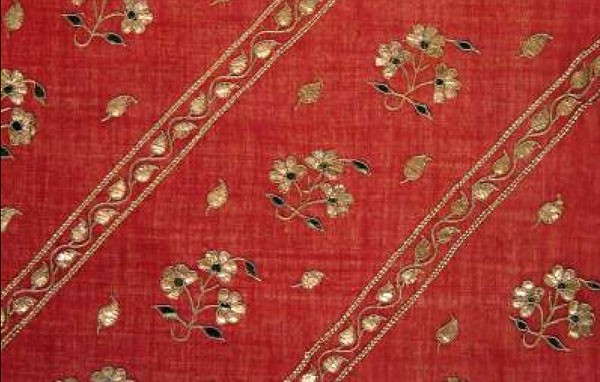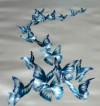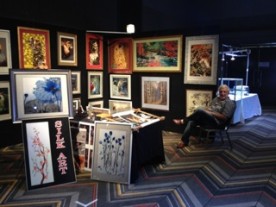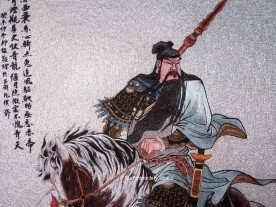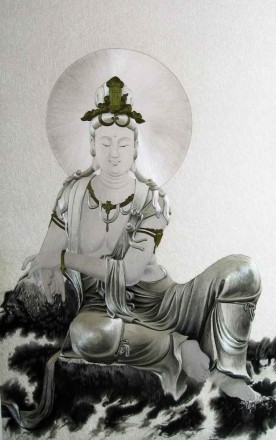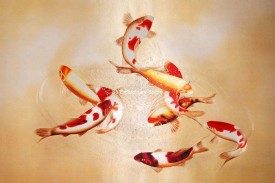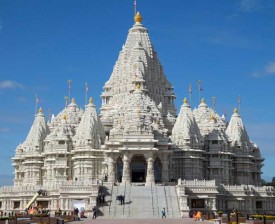Embroidery, often referred to as "painting by needle," is a splendid expression of aesthetics, painstakingly crafted to infuse grace and elegance into everyday items. India's embroidery draws inspiration from the rich tapestry of its natural surroundings, with each region reflecting the vibrant colors of its indigenous flora and fauna.
Indian embroidery designs are intricately woven into the fabric, with stitches carefully chosen to complement the texture and theme. Patterns are constructed from fundamental elements like dots, circles, squares, triangles, and their imaginative combinations. Furthermore, religious motifs, such as temple doorways, tulsi plants, gopurams, and more, enjoy widespread popularity. This craft extends beyond traditional textiles, finding its place on leather, velvet, net, cotton, hessian, silk, and even raffia and screwpine articles.
The notion of enhancing fabrics with precious metals and gemstones has been an enduring tradition. Beads and mica have also been employed to embellish embroidered textiles. Besides traditional materials like wool, cotton, silk, beads, and metallic threads, Indian artisans have incorporated exotic elements like beetle wings and various seeds to enhance the opulence of their creations.
Custom Portrait Embroidery from Photo
Through trade, cultural exchanges, and diverse influences, India has embraced a multitude of embroidery stitches practiced worldwide.
Kashmiri Embroidery: Known for its rich spectrum of colors and exquisite craftsmanship, Kashmiri embroidery features designs that portray local symbols like the chinar leaf, grape, cherry, plum, apple blossom, lily, saffron flower, and regional birds.
Phulkari: Hailing from Punjab and Haryana, Phulkari embroidery is characterized by vibrant flossed silk on coarse cotton fabric, typically in shades of orange, red, or blue.
Chamba Rumals: These embroidered kerchiefs and scarves from Chamba, adorned with scenes from Krishna Leela and religious subjects, utilize the simple running stitch with elaborate decoration, occasionally adding mica for extra sparkle.
Kutch-Saurashtra: This region boasts intricate embroidery as an integral part of its agricultural and pastoral life, with skilled artisans extending their craft to various professions, even cobblers.
Kasuti: Hailing from Karnataka, Kasuti relies on stitches like the back stitch, running stitch, cross stitch, and zig-zag running stitch to depict religious themes, favoring brighter shades on dark hand-woven cloth.
Chikan Work: Centered in Lucknow (Uttar Pradesh) and Gaya (Bihar), Chikan embroidery employs a variety of stitches, including knotted stitches for raised surfaces and creating a net effect.
Kantha Embroidery: From Bengal, Kantha artistry imaginatively employs waste rags, sewn with simple running stitches to form motifs, often recording scenes from daily life.
Tribal Embroidery: A diverse and extensive category, tribal embroidery features myriad styles and compositions. The Lambadi and Banjara tribes are renowned for their vibrant work, while the Toda embroidery from the Nilgiris stands out.
Zari: India has a storied tradition of gold and silver threadwork, dating back to Rig Vedic times when it was revered as hiranya fabrics. These materials, including stars and spangles, find extensive use in embroidery, crafting exquisite saris, evening bags, footwear, belts, and the world-renowned brocades.
Lace: Southern India is renowned for producing exceptional lace, often originating from missionary centers or home-based craftswomen. Narsapur in Andhra Pradesh is a significant hub for lacework, predominantly employed in table and bed linens, cherished for its quality and aesthetic charm.
Embroidery is a profession engaging around three lakh individuals, primarily women. In Kashmir, it traditionally transcends gender boundaries, with men actively participating in this cherished craft.
by Su Embroidery Studio (SES), Suzhou China
SES is dedicated to Chinese Silk Embroidery Art and High-End Custom Embroidery
Find SES's embroidery work at Chinese Silk Embroidery for Sale.


